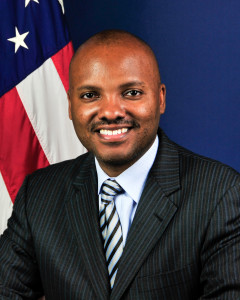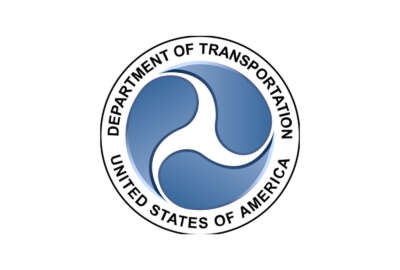
DoT is not satisfied with 50 years of safety improvements
With the rapidly changing transportation sector, the Department of Transportation will continue to build on its legacy of putting safety first.
Transportation in America is in a state of rapid change. Unmanned aerial vehicles are carving out a share of the air space, the air traffic control system is undergoing a major upgrade, and driverless automobiles are poised to make a major impact in the coming years. Once a branch of the Commerce Department with an undersecretary for transportation, today the cabinet-level agency is an umbrella for 12 operating administrations.
As the U.S. Department of Transportation approaches its 50th anniversary next year, they plan to celebrate their safety record and continue to enhance it, Deputy Assistant Secretary for Administration Keith Washington told Agency of the Month.

With 47,000 employees the Federal Aviation Administration makes up about 84 percent of the department. About 18,000 of its employees are air traffic controllers.
FAA expects to complete most of the foundational infrastructure for the NextGen, a massive project to upgrade the air traffic control system.
“We’re going from a radar based air traffic control system to a satellite based air traffic control system, which will allow the American public to go from point A to point B in a more efficient manner, saving both time and fuel so it will be more environmentally responsible,” Washington said.
Washington is a firsthand witness to 25 years of transformation at DoT. He saw the establishment of the National Highway Traffic Safety Administration that took some functions from the Federal Highway Administration and expanded the overall safety function.
“Transportation [Dept.] and the National Highway Traffic Safety Administration, they’ve been focused on distracted driving,” Washington said.
In 2013 more than 3,000 Americans lost their lives because of distracted driving.
The NHTSA has banned the use of cells phones and text messaging for commercial drivers, Washington said. “We’ve really been doing a lot to educate the public on the dangers of distracted driving.”
In September, 10 major vehicle manufacturers committed to making automatic emergency braking (AEB) a standard feature on all new vehicles built.
The department is also championing Vehicle-to-Vehicle (V2V) technology.
Washington says V2V “has a huge opportunity to reduce fatalities and make it safer for Americans as they travel,” he said. “But essentially with the V2V technology, cars will be able to communicate with each other which will mitigate human error. In addition to the safety function it will also help eliminate congestion.”
Secretary Anthony Foxx announced millions of dollars in grants in September for V2V pilot programs.
“We really want New York to be the prototype for this type of technology. Our expectation is that cars in 2016 will start having that V2V technology that will improve our safety record,” Washington said.
But cars and drivers are just one side of the equation.
“We’re going to have 70 million more Americans and unfortunately the state of the infrastructure is crumbling,” Washington said. “We really need sustained long-term transportation funding.”
One of the ways they’ve been raising awareness is through social media campaigns such as #showusyourinfrawear. They asked the public to post photos on Twitter and Instagram of things like crumbling bridges, sidewalks or disappearing bike lanes.
“We want the leaders in the country to be aware that the American people want a better infrastructure,” Washington said. “We had a huge response.”
Copyright © 2024 Federal News Network. All rights reserved. This website is not intended for users located within the European Economic Area.
Lauren Larson is Federal Drive producer and broadcast operations manager at Federal News Network. Follow @llarsonWFED
Follow @llarsonWFED




